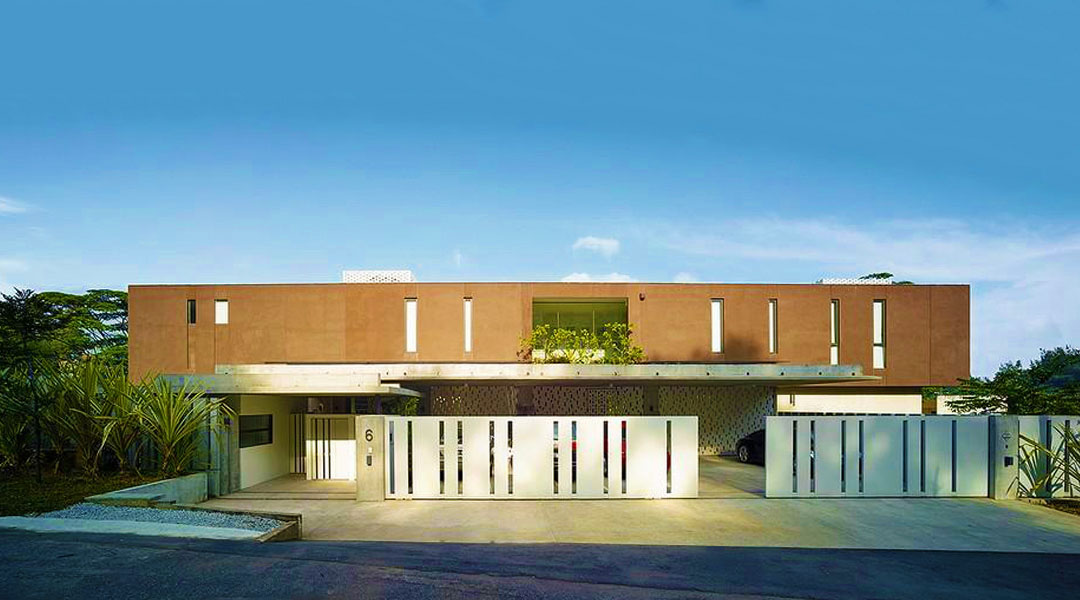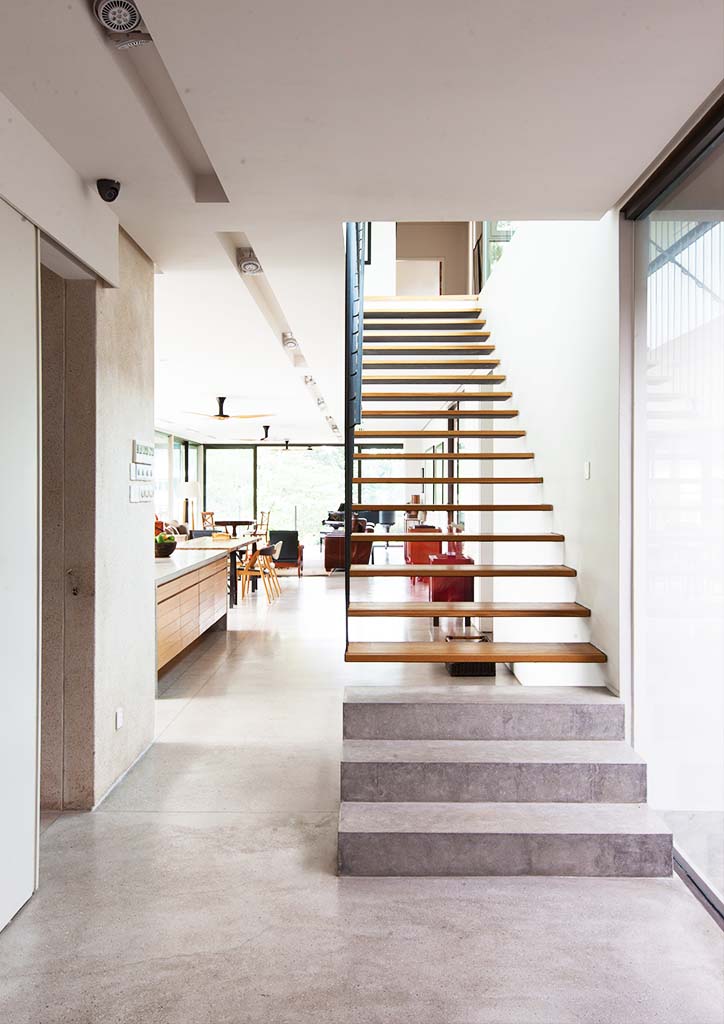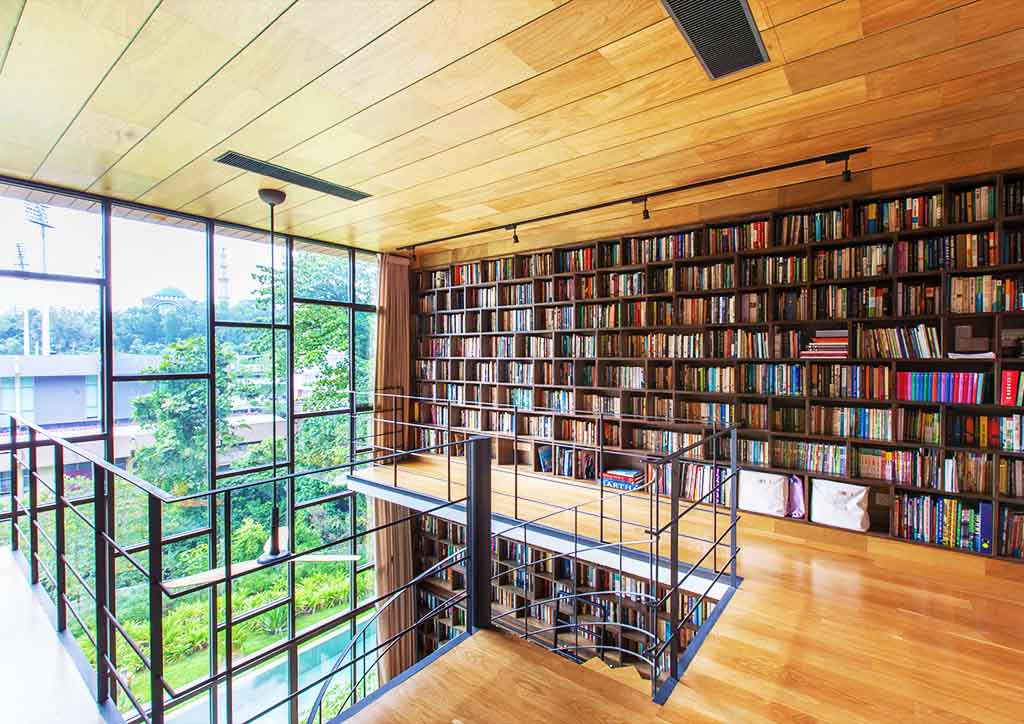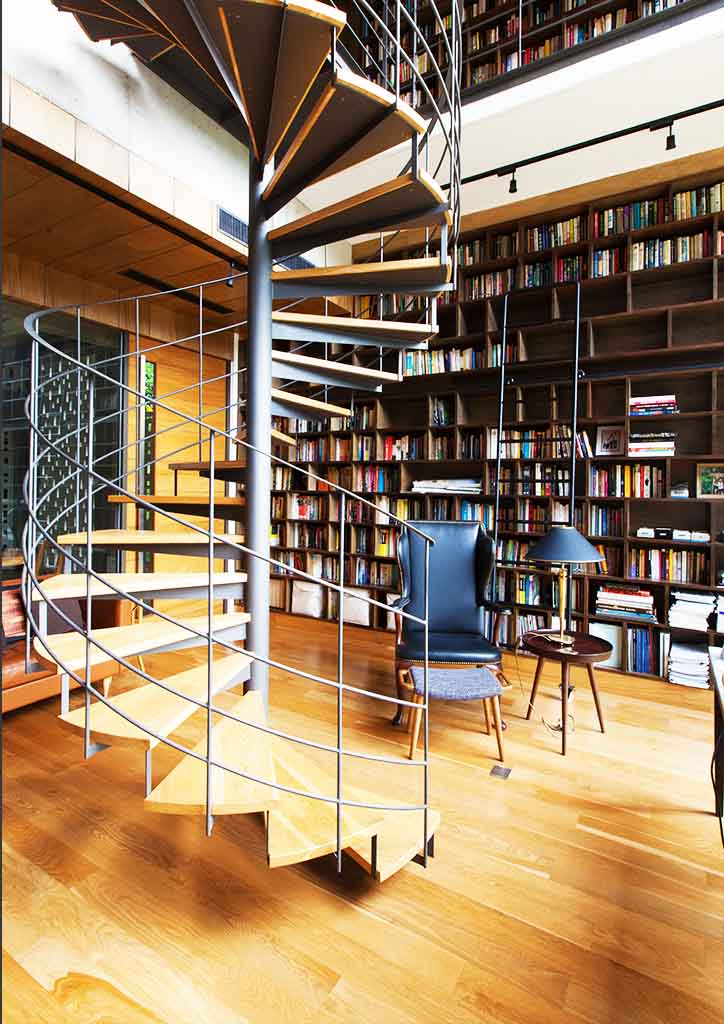
This open house is a breezy sanctuary within Kuala Lumpur’s city center
Only three hundred houses or so populate “Malaysia’s Beverly Hills,” an upscale residential area nestled in hills overlooking Kuala Lumpur—Bukit Nanas, Bukit Bintang, and Bukit Tunku. Of the three, Bukit Tunku remains the suburban enclave, dotted with stately mansions sans the commercial developments that have sprouted in the other two.

Architecture firm zlgdesign‘s contribution to the sprawling old neighborhood distinguishes itself with a long rectangular structure, whose copper-hued exterior gives it an air of industrial efficiency. Save for the vertical windows slicing through the façade and teasing glimpses of the spaces within, the house as seen from the street is inscrutable, concealing the porosity of the architecture and the easy openness of the layout inside. The 2,400-square meters lot slopes downward to a stream a few meters outside the property line, and the absence of neighbors ensures an uninterrupted view of the sunset.

zlgdesign’s philosophy centers on respecting context to produce architecture unique to each project. The parti in this case was to capitalize on the view and harness the free-flowing air of the hills. “The owners wanted a naturally ventilated house that minimizes reliance on air-conditioning, and open space for their young children to play in,” says Susanne Zeidler, Executive Director of zlgdesign which she heads with Huat Lim. The house would accommodate eight people, which includes the clients’ two children, parents, and two maids.

A three-storey structure that takes up a third (929 square meters) of the lot was erected close to the street, leaving space at the back for a salinated pool, gym, basketball court, and surrounding gardens. The house hugs the slope, limiting the cut-and-fill of the site to open up a lower ground floor for the guest room and entertainment areas. The ground floor at street level contains the living, dining and kitchen areas, whilst the bedrooms are ensconced on the second floor. The rear elevation facing west reveals the house’s division of spaces. The lower ground level opens to the garden, and the fenestration for the ground floor gives the second floor the appearance of being cantilevered. Meter-long overhangs finished in earth-colored concrete frame the second floor, making the structure appear top-heavy but were necessary to provide shade for the bedrooms.

Instead of leading to a living room, as one might expect, the ground floor foyer leads to the husband’s father’s room on the left, and to a corridor on the right. The passage takes one past a powder room to a large space laid out with the dry kitchen, then the dining area, before terminating in the living area. Parallel to the corridor, a staircase leads to the lower ground floor where the maids’ room, utilities, and entertainment areas are. A separate staircase takes one up to the bedrooms. Adjacent to the foyer, a two-storey library has a spiral staircase that descends to the lower ground level, where views of meandering paths through the greenery make the room a pleasant place to catch up on reading, particularly in the mornings.
It is the kitchen-dining-living area on the ground floor that expresses the parti perfectly. The processional space of the corridor heightens anticipation for the openness of this great room, where light and air freely stream in throughout the day. Glass sliding doors on the north and west sides open views of the garden below and grant entry to winds from either direction, depending on the time of year. Winds from the west are cool, owing to the thick tree canopies sheltering the property. The constant flow of fresh wind pushes hot air up the atrium beside the staircase to the second floor, where it exits through the perforations in the brick wall.

Khalsa brick, a lighter yet durable alternative to clay, was used for the perforated wall. The pool pavilion and some kitchen surfaces finished with Shanghai plaster, a dying craft Zeidler wants to keep alive. “The client wanted a laid-back house with simple materials, nothing opulent,” says Zeidler. “We used the opportunity to experiment with unique materials as well as support local craftsmen.” ![]()
READ MORE: Sculpted in Concrete: The dialogues of spaces in Akihisa Hirata’s Tree-Ness House


